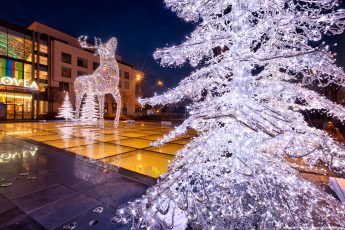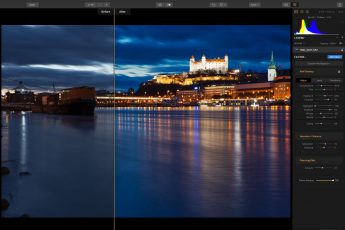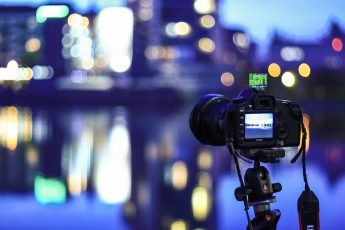 So today I did a little shopping, and got myself a new camera. And since it’s better than the Canon 5D mark II I had before, this is now my main camera, the Sony a7R.
So today I did a little shopping, and got myself a new camera. And since it’s better than the Canon 5D mark II I had before, this is now my main camera, the Sony a7R.
You may be curious how I was choosing my new camera, so I will elaborate a little here. There are not many things I need from a camera. Actually it’s only two. Hight megapixel count and high dynamic range. Other than that, I don’t need much. I don’t use autofocus. I don’t use high iso. I usually don’t take videos. So the two are my main points I’m looking at.
 Secondly, I needed something where I would still can use the old 5D mark II as a backup camera, so it had to be using Canon lenses. So no chance for a Nikon camera here (even if the Nikon D810 looks very nice :))
Secondly, I needed something where I would still can use the old 5D mark II as a backup camera, so it had to be using Canon lenses. So no chance for a Nikon camera here (even if the Nikon D810 looks very nice :))
So in the end my choices were a Canon 5D mark III, Canon 5Ds r and a Sony a7R. The 5D mark III was removed from the selection immediately, as it gives me almost nothing new compared to the 5D mark II. So I ended with two cameras to choose from. And here is where price came into account. The 5Ds r gives me 14 megapixels more with a worse dynamic range than the a7R for double the price. And for me, that just not enough for so much money. So I ended with the only possible option, the a7R.
 You may also ask why I didn’t waited for the a7R II. The reason is that I needed a backup camera. Recently I used a Canon 7D as a backup, but that’s not so great, as all my lenses are for full frame, and if I had to use it, the results would be worse. So now the 5D mark II will stay as a backup, which is a much better situation :) The A7R II may not be that far away, but until its widely available, it still will be months.
You may also ask why I didn’t waited for the a7R II. The reason is that I needed a backup camera. Recently I used a Canon 7D as a backup, but that’s not so great, as all my lenses are for full frame, and if I had to use it, the results would be worse. So now the 5D mark II will stay as a backup, which is a much better situation :) The A7R II may not be that far away, but until its widely available, it still will be months.
I of course also got a lens adaptor for the new camera, the Metabones Canon EF to Sony E ver IV. Will have to do some testing to see how all works together, but I hope all should be fine, and I get some great shots from this camera :)
Btw. doesn’t it look funny with a big lens on it? And this is just the 16-35, which is still a small lens :)






Congratulations Miroslav! The dynamic range and color rendering in the Sonys are excellent! :D
I considered picking one Sony last year too, but stayed with a D610 and a good lens, saving some money – I will still wait to see what happens in the next one of two years before changing the system… to me, the mirrorless cameras are the future.
Those were exactly the reasons I got it. Would be happy no longer to have to deal with the red hue on on my photos from the canon.
Yeah… but one can always wait.. I needed it right now :)
I think you’ll love the A7R. I bought one back in Nov. 2013. Based on my experience with the A7R I’ve since purchased the A7S and A7 II. All great cameras for specific uses!
Both the A7R and A7S are full spectrum modified for astro/nightscape/IR photography. The A7 II is my primary daylight shooter.
I’ve retained a Canon 60D for use with a couple of long lenses I use for wildlife photography. Autofocus is not fast with adapted lenses!
I hope so :) I just have to get used to it being quite different to the 5D mark II. And yeah.. the autofocus is sluggish. But I never planed to use this camera for different than landscape photos. For other stuff, I’m still keeping the 5D, as the real viewfinder is much better for moving stuff anyway.
With Sony FE lenses I’ve never had a problem shooting fast moving targets with the A7R, A7S or A7 II, per: https://plus.google.com/photos/116260312230579398213/albums/5957750875241135297/6132989708147430994?pid=6132989708147430994&oid=116260312230579398213, although the A7 II is nice with its in-body stabilization for manual lenses.
If I were you (and shared your requirements) I´d chose the same camera! I am looking forward to the pictures”
You are sharing much with the world so I am happy to happy to share at least something with you. I´ve got Lightroom 6.0 and I will elaborate here, why. I was sitting on LR4 because I felt it was slow and LR5 was even worse, thus I had not updated to LR5 but had waited to either LR6 being more responsive or I´d have moved to Capture One Pro.
To recapitulate: speaking about functionality I was happy even with LR4, but not so with speed even on my reasonable powerful computer: W3680, 18 G RAM, catalogue on a SSD, previews on a raid0 and RAW´s on another RAID0 on another pair of disks, nVidia GTX 750Ti/2GB RAM.
I downloaded LR6 on the very first day it was available. It was a tough job to find a link to the stand-alone version, Adobe is doing well in hiding it in favor of the cloud solution. Later I learned I did not have to search so long because both EXE files are supposed to be identical, differentiating only after a license key has been entered. Good thing: I can use LR6 on both my PC and laptop with my single stand-alone licence.
My OpenGL engine was considered to be faulty by LR6 so I started using LR6 with CPU only. My major findings are: browsing&scrolling in grid mode is may twice as quick as previously and switching from grid to develop modules takes now between a fraction of a second to maximum 2 seconds; this was previously between 2 and 5 seconds. For me reason enough to purchase the upgrade. Because apparently no old functionality was broken in the news version, I purchased the upgrade. Some different response times feel better with LR6 as well and I appreciate it. If something takes few minutes, you can use this time for another task. But if pressing a key takes half a second to respond and you use it hundred times a day, this results in unavoidable time loss.
Besides the GPU support probably face recognition, HDR and panorama are probably the most highlighted new functionalities on the internet, so I gave them a try, without big illusions. But I was pleasantly surprised. In many cases they are quite usable. This said, they clearly cannot replace any of my utilities in full: Autopano Giga, EasyHDR, Photomatix and SNS-HDR. But the LR6 pendants are good enough for me to use them in some cases. HDR delivers rather naturally looking pictures with good tonality, this is often a very good thing. It suits well as a basis for later toning in another HDR utility, if you decide so. Panorama delivers mostly very clean results as well. Limitations I found: HDR did deliver hallo´s on some pictures where EasyHDR produced none and Panorama occasionally failed to align hand-shot panoramas, when Autopano delivered perfect one-click results. And for sure, you have rather limited options with LR6. Still, in many cases you can obtain rather good results with LR6 with almost no effort. Talking about speed: LR6 is about on par with my other utilities. Autopano is technically seen much faster, but suffers under my workflow, where I first export RAWs to TIFF´s which adds some processing time. Neither HDR nor and Panorama use all of my CPU cores, they use maybe two; there is potential given away. I guess Adobe will enable support of all cores in LR7 by changing a single line of source code and make it public like a major improvement (which it really will be).
I found the face recognition to be perform rather well on private picture. I higly recommend you to correct and sonsolidate your existing people keywords AND mark them as person-type keyword before starting to use the face recognition.
Back to the GPU support:
User ThanatosARG on forums.adobe.com helped me with enabling my nVidia card for LR6 and I could have used it already for few hours. I am still trying to find anything what has gained on speed;) Panoramas and HDR´s for sure show no profit from my GPU.
I am quite happy with LR and thanks to improvements in LR6 I will stick with it for another few years, but I consider other tools to be comparable to LR (and some of them killing LR in terms of responsiveness). The LR is my personal leader becaus of thorough functionality in a single tool counting simple picture management, good picture development module and simple yet useful integration with another tools.
Hope you enjoyed the reading!
Georg from Austria